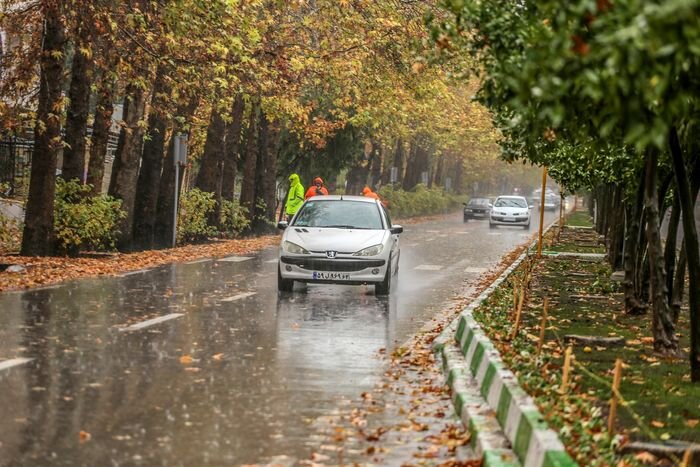Rainfall in Iran 33% higher than long-term average

TEHRAN – Since the beginning of the current water year (September 23, 2019), the whole country received 282 mm of rainfall, which is 31.8 percent higher compared to the past 51 years, which was recorded at 213.9 mm.
However, compared to the same period last year, the country is short of rain by 5.4 percent, as 298.1 mm of rain poured over the country during the previous water year.
Iran is divided into six primary catchment areas, including the Persian Gulf and Sea of Oman in the south (with 440.2 millimeters), the Caspian Sea in the north (417.8 mm), Urmia Lake in the northwest (339.9 mm), Karakum in the northeast (283.9 mm) and the Central Plateau in Markazi Province (226.1 mm).
Precipitation in four catchment areas of the Persian Gulf, Sea of Oman, Caspian Sea, and Urmia Lake raised compared to that of last year, while the other two remaining catchments faced rainfall shortages during the same period last year.
The global average annual precipitation is more than 990 mm, based on which Iran Is classified as an arid and semi-arid country.
Almost all provinces hit long-run means
Gilan, Mazandaran, and Lorestan provinces surpassed other provinces in terms of high rainfall rates over the aforesaid period, as the rainiest provinces, Gilan, Mazandaran, and Lorestan provinces got 811.7, 663.7 and 581.9 mm of rain, respectively.
However, compared to the previous water year, Gilan province faced a 5.8 percent decline in rainfall, and Mazandaran and Lorestan provinces also experienced a 6.2 and 40.7 percent drop in precipitation, while all received more rainfall compared to the long term means.
The average long-term rainfall in Hormozgan province is reported 93.6 mm, which shows that this year's precipitation has increased by 205.5 percent, he highlighted.
Almost all the provinces experienced increased rainfall compared to the long term average, except for Chaharmahal-Bakhtiari, Kohgiluyeh-Boyerahmad, and Kermanshah.
Yazd, South Khorasan, and Semnan provinces recorded the lowest rainfall among the whole provinces.
During the aforementioned period, 343.6 mm of rain doused Tehran, which shows a 23.5 and 9.1 percent increase compared to both the long run and last year, respectively.
Is increased rainfall always a good sign?
Fluctuation in precipitations amounts received in some provinces at the beginning of the crop year is one of the main signs of climate change in the country which not only results in an increase in water resources but it would lead to recurrent destructive floods in the regions.
Some provinces that have been struggling with low rainfall faced above normal rainfall during the same period last year or in the long run, while some others that have always been meeting above-normal averages are facing shortages.
Climate disruption or global climate disruption, is the new term scientists are using to explain the extreme fluctuations that can and will occur to our weather systems as anthropogenic-caused carbon dioxide and other greenhouse gases increase in our atmosphere, the oceans get warmer, and weather events go wild.
The report regrets that climate disruption will be continuing as climate change is on the rise and it calls on taking proper and effective measures to alleviate the adverse effects of climate change on the country.
FB/MG
